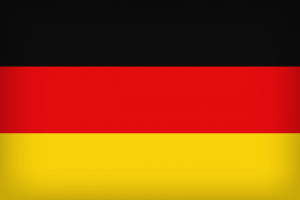Language/German/Grammar/Descriptive-Adjectives
 Հայերէն
Հայերէն Български език
Български език 官话
官话 官話
官話 Hrvatski jezik
Hrvatski jezik Český jazyk
Český jazyk Nederlands
Nederlands English
English Suomen kieli
Suomen kieli Français
Français עברית
עברית हिन्दी
हिन्दी Magyar
Magyar Bahasa Indonesia
Bahasa Indonesia فارسی
فارسی Italiano
Italiano 日本語
日本語 Қазақ тілі
Қазақ тілі 한국어
한국어 Lietuvių kalba
Lietuvių kalba Νέα Ελληνικά
Νέα Ελληνικά Şimali Azərbaycanlılar
Şimali Azərbaycanlılar Język polski
Język polski Português
Português Limba Română
Limba Română Русский язык
Русский язык Српски
Српски Español
Español العربية القياسية
العربية القياسية Svenska
Svenska Wikang Tagalog
Wikang Tagalog தமிழ்
தமிழ் ภาษาไทย
ภาษาไทย Türkçe
Türkçe Українська мова
Українська мова Urdu
Urdu Tiếng Việt
Tiếng ViệtAs a German language teacher with 20 years of experience, I am excited to teach you about descriptive adjectives in German grammar. Adjectives are used to describe people, objects, and situations, and they add color and depth to language. By learning how to use adjectives properly, you will be able to express yourself more effectively in German.
Descriptive Adjectives
Descriptive adjectives are used to provide more specific information about a noun or pronoun. They describe features like size, color, shape, and texture. In German, adjectives come before the noun they describe and agree with the gender, number, and case of the noun. For example, in the sentence "Der blaue Himmel" (the blue sky), "blau" (blue) is the descriptive adjective that agrees with the masculine noun "Himmel" (sky) in the nominative case.
To form a descriptive adjective in German, simply add "-e" to the end of the stem word. For example, "schnell" (fast) becomes "schnelle" for the feminine singular form. The adjective endings can be a little tricky, so it's important to study them closely. Here are some examples of descriptive adjectives with their respective genders and endings:
| German | Pronunciation | English |
|---|---|---|
| großer | ['ɡroː.sɐ] | big (masculine singular) |
| große | ['ɡroː.sə] | big (feminine singular) |
| großes | ['ɡroː.səs] | big (neuter singular) |
| große | ['ɡroː.sə] | big (plural) |
Notice that in the plural form, the adjective ending is "-en" instead of "-e". This is the case for all genders in the plural form.
Here are some more examples of descriptive adjectives in German:
- Das kleine Mädchen (the small girl)
- Der runde Tisch (the round table)
- Die leckere Pizza (the delicious pizza)
- Die heißen Sommertage (the hot summer days)
Comparative and Superlative Forms
Just like in English, German adjectives have comparative and superlative forms to compare different degrees of quality or quantity. To form the comparative, add "-er" to the end of the adjective, and to form the superlative, add "-ste". Here are some examples:
| German | Pronunciation | English |
|---|---|---|
| höher | ['høː.ɐ] | higher |
| am höchsten | [am 'høːçs.tən] | highest |
| länger | ['lɛŋɐ] | longer |
| am längsten | [am 'lɛŋs.tən] | longest |
It's important to note that some adjectives have irregular comparative and superlative forms. Here are some examples:
- gut (good) --> besser (better) --> am besten (best)
- viel (much/many) --> mehr (more) --> am meisten (most)
- wenig (little/few) --> weniger (less) --> am wenigsten (least)
Conclusion
Descriptive adjectives are important to make your German speech more colorful and nuanced. By learning the proper adjective endings and comparative/superlative forms, you can accurately express your thoughts and emotions. Keep practicing, and soon you'll be speaking German like a pro!
Sources

